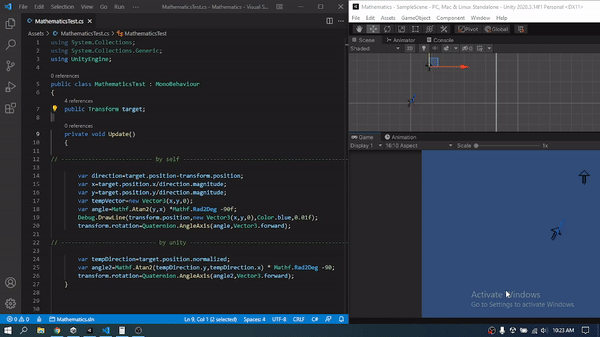Here’s my work for the player movement challenge:
Let OS be our starting vector (0, 0)
Let V1 be the vector following our first move
Let V2 be the vector following our second move
V1 = OS + (-1 * (0, 5 * 10))
V1 = OS + (-1 * (0, 50))
V1 = OS + (0, -50)
V1 = (0 + 0, 0 + -50)
V1 = (0, -50)
In this first equation, I’m equating ‘moving South’ with moving into the negative range of the y-axis, so we use the -1 as a scalar to invert the vector (otherwise you end up with positive movement up the y-axis).
Now that our player has moved to their new position (0, -50) we can follow the next movement:
V2 = V1 + (2 * 20, 0)
V2 = V1 + (40, 0)
V2 = (0 + 40, -50 + 0)
V2 = (40, -50)
For this final step, I interpreted ‘moving East’ as moving into the positive values of the x-axis. Because we’re not moving backward, and apparently not increasing our speed, we don’t need any extra scalar manipulation and can just work the equation as we expect. This ultimately leaves us with a position of (40, -50) for the player.


